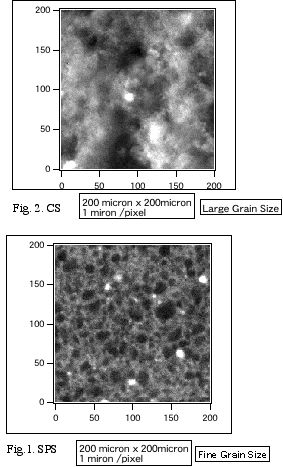Micro fluorescent x-ray imaging
Inquiry number
SOL-0000001008
Beamline
BL20XU (Medical and Imaging II)
Scientific keywords
| A. Sample category | inorganic material, research on method, instrumentation |
|---|---|
| B. Sample category (detail) | ferroelectric material, insulator, ceramics, solid-state crystal |
| C. Technique | fluorescent X-rays |
| D. Technique (detail) | trace-element, diffraction, scattering |
| E. Particular condition | microbeam (1-10 µm), 2D imaging |
| F. Photon energy | X-ray (4-40 keV) |
| G. Target information | dislocation, strain, function and structure, function, elemental composition |
Industrial keywords
| level 1---Application area | electric component, cell (battery) |
|---|---|
| level 2---Target | condenser, fuel cell |
| level 3---Target (detail) | electric rod |
| level 4---Obtainable information | crack, crevice, structure, molphology |
| level 5---Technique | imaging |
Classification
A80.10 electronics, A80.12 semiconductor, A80.30 inorganic material, A80.36 electrochemistry
Body text
A hard x-ray scanning microscope opens the possibility of combining x-ray imaging and the chemical species analysis. We have performed an element (Sr) mapping of dielectric ceramics BaTiO3/SrTiO3 with fluorescent x-ray using microbeam being developed. The microscope experiment was performed at the end station of beamline 20XU using the sputtered-sliced zone plate as a focusing element.
Two kinds of samples (composite ceramics of BaTiO3/SrTiO3 = 9 : 1 were prepared. One was prepared using the spark plasma sintering (SPS) or pulse electric current sintering. SPS is make use of microscopic electrical discharge between particles under pressure of 30-50 MPa and electric current of 4000A. This process enables a compact powder to be sintered to a high density in much shorter sintering periods, 3 minutes compared with the conventional sintering process. The short sintering periods is advantageous in suppressing exaggerated grain and chemical reaction between the grains. The other was the conventional sintering (CS) method. For CS process the mixed BaTiO3/SrTiO3 = 9 : 1 powder was pressed into a pellet and sintering in air at pressure 190 MPa and at a temperature 1300C for two hours.
Two dimensional mapping of Sr atom for the SPS and the CS were made. Fig.1 shows the scanning micrographs of the SPS and the CS respectively, where white area denotes high Sr content. In the SPS the area boundaries are clear, and SrTiO3 particles seem to be more localized. In the CS the boundary among white, gray and black are not clear, and SrTiO3 particles seem to be distributed homogeneously.
Source of the figure
Bulletin from SPring-8
Bulletin title
ユーザーレポート2003B
Page
118
Technique
The BL20XU is suitable for microbeam experiment because of spatially coherent X-ray beam using long (248 m) beam transport path. In this experiment, a sputtered-sliced Fresnel zone plate is used as a beam focusing element, and micrometer-resolution mapping in high energy X-ray region becomes possible.
Source of the figure
No figure
Required time for experimental setup
2 shift(s)
Instruments
| Instrument | Purpose | Performance |
|---|---|---|
| Multi-purpose high-precision diffractometer | micro-focusing | |
| Beam-monitor 2 | alignment of optics | 4.3 µm pixel size |
| Sputtered-sliced zone plate | beam focusing element |
References
Related experimental techniques
Questionnaire
The measurement was possible only in SPring-8. Impossible or very difficult in other facilities.
Ease of measurement
Middle
Ease of analysis
Easy
How many shifts were needed for taking whole data in the figure?
Two-three shifts


